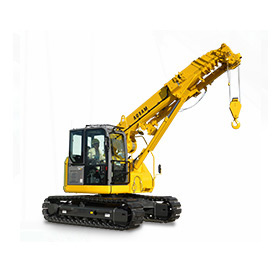Vertical Burn Testing Device for Cables to Ensure Safety and Compliance Standards
The Cable Vertical Burning Test Machine Ensuring Safety and Compliance
In today's world, where electrical systems and wiring play a critical role in our daily lives, ensuring the safety of cables is of utmost importance. A fundamental part of this assurance comes from standards and testing methods that evaluate the fire resistance of cables. One such essential piece of equipment in this regard is the Cable Vertical Burning Test Machine. This apparatus is designed to simulate real-world fire scenarios, allowing manufacturers and regulators to test the burning characteristics of cables effectively.
Understanding the Cable Vertical Burning Test
The primary purpose of the Cable Vertical Burning Test is to assess how a cable reacts when exposed to flames. Adopted from various industry standards, this test measures critical parameters, including the ignition time, flame spread, and burning duration of the cable when subjected to a defined flame source. These parameters are crucial for understanding the behavior of cables in potential fire situations, which can significantly impact safety in buildings, transportation systems, and other infrastructures.
Importance of the Test
Fire safety is a vital consideration in the design and installation of electrical systems. In the event of a fire, cables that do not have adequate flame-retardant properties can contribute to the spread of flames and toxic smoke. The results from the Cable Vertical Burning Test help manufacturers to optimize their products and comply with international safety standards such as UL, IEC, and BS. Compliance with these standards not only safeguards lives but also protects property and reduces overall fire hazard risks.
Features of the Cable Vertical Burning Test Machine
cable vertical burning test machine

A typical Cable Vertical Burning Test Machine includes several key components designed to facilitate accurate and reliable testing. The machine features a vertical testing chamber where the cable samples are placed. An adjustable flame source is positioned at the lower end of the sample, typically igniting the bottom of the cable. This setup allows for a controlled observation of how the fire propagates along the length of the cable.
Additionally, the machine is equipped with sophisticated monitoring tools that record important data throughout the burning process, such as the time taken for ignition, the rate of flame spread, and any emissions that may arise from burning materials. These metrics are crucial for evaluating a cable’s performance under fire conditions and provide invaluable data for regulatory submissions.
The Testing Procedure
Conducting a vertical burning test involves several standardized steps. First, the cable sample is prepared according to specified dimensions and conditions. Once the sample is positioned in the testing chamber, igniters are used to introduce a flame at a predetermined location. Observers closely monitor the cable’s response, documenting key metrics as specified in the testing standards. After the test, analysis of data helps determine the cable's suitability for use in various applications, particularly in high-risk environments.
Conclusion
In summary, the Cable Vertical Burning Test Machine is an indispensable tool in the realm of electrical safety. By systematically assessing the fire performance of various cables, the machine plays a crucial role in ensuring safety compliance within the industry. As technology advances and new materials are developed, ongoing testing and evaluation remain vital to keep pace with changing regulations and emerging safety challenges. Through rigorous testing, manufacturers not only enhance the safety of their products but also contribute to a safer environment for everyone.
-
Why the Conductor Resistance Constant Temperature Measurement Machine Redefines Precision
NewsJun.20,2025
-
Reliable Testing Starts Here: Why the High Insulation Resistance Measuring Instrument Is a Must-Have
NewsJun.20,2025
-
Flexible Cable Flexing Test Equipment: The Precision Standard for Cable Durability and Performance Testing
NewsJun.20,2025
-
Digital Measurement Projector: Precision Visualization for Modern Manufacturing
NewsJun.20,2025
-
Computer Control Electronic Tensile Tester: Precision and Power for the Modern Metal Industry
NewsJun.20,2025
-
Cable Spark Tester: Your Ultimate Insulation Assurance for Wire and Cable Testing
NewsJun.20,2025
 Copyright © 2025 Hebei Fangyuan Instrument & Equipment Co.,Ltd. All Rights Reserved. Sitemap | Privacy Policy
Copyright © 2025 Hebei Fangyuan Instrument & Equipment Co.,Ltd. All Rights Reserved. Sitemap | Privacy Policy
